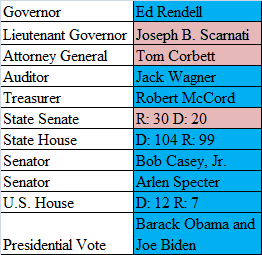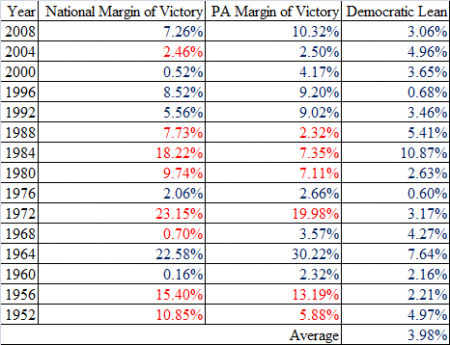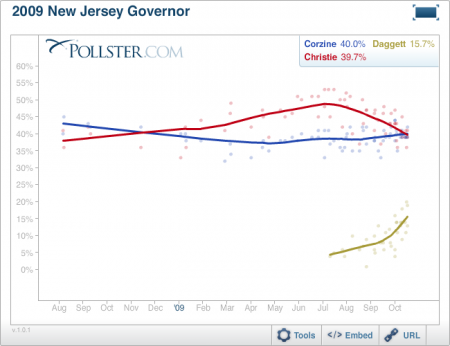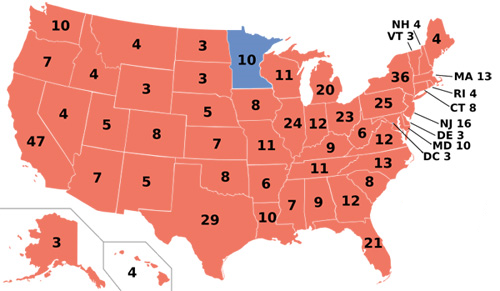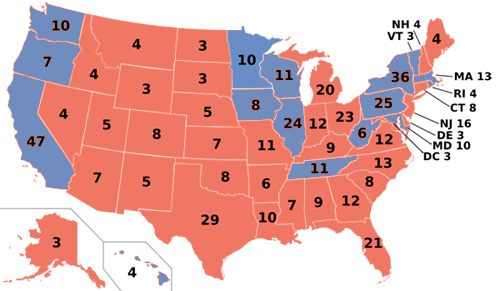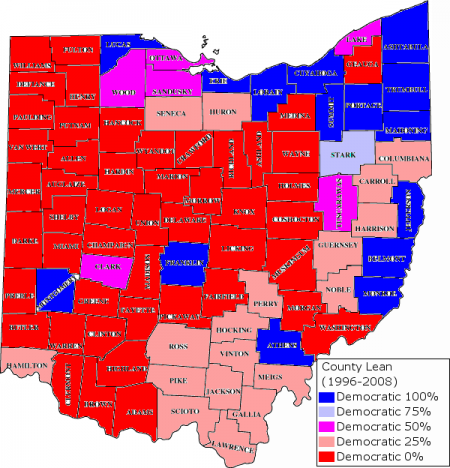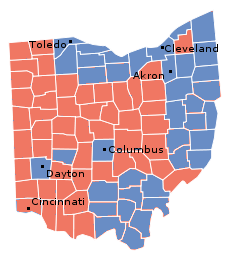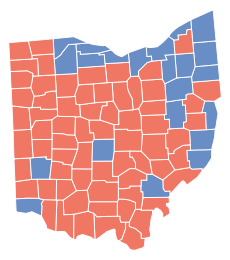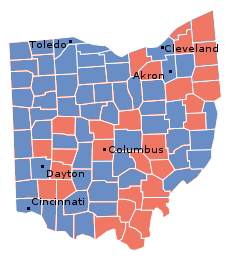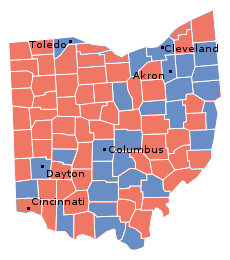By: http://thepolitikalblog.wordpr…
This is the last part of my review of the swing state Ohio.
Republican Ohio
What parts of Ohio vote Republican?
All of it, of course, except for the parts that vote Democratic.
That is a pretty facetious answer to a fairly serious question, but there is something to it. Blue Ohio has a set of defined, separate characteristics. Red Ohio does too, but not to the same degree. It is far easier to describe Democratic Ohio than Republican Ohio.
The following map is a good beginning in exploring Republican Ohio.

These are the places which most heavily supported John McCain (for those who are curious, the most Democratic counties were Cleveland, Toledo, Ohio University, and Youngstown). They are located primarily in the southwestern portion of the state, away from the Democratic ‘7’. Interestingly, practically none are part of Appalachia – considered Obama’s weakest region in the country.
Southwest Ohio historically – and to this day remains – the most conservative part of Ohio. Geographically, it is the Republican base; even in Democratic landslides, it often will vote for the red candidate.
There is another trait the highlighted counties have in common: most are semirural and somewhat less populated. Another map helpfully illustrates this.
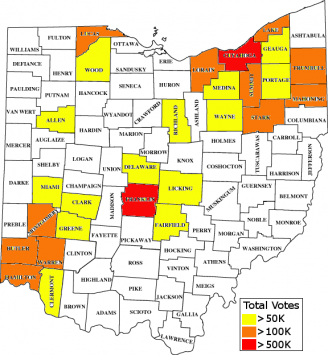
Compare the two maps. Very few of the counties in which John McCain took over 60% of the vote were populated enough to appear on the above map. There is very little overlap between the reddest parts of Ohio and the densest parts of Ohio – except, importantly, the suburbs of Cincinnati.
More below the flip.
This does not mean, however, that all counties with over fifty thousand votes went blue. Quite the opposite, in fact: many of the yellow counties voted for McCain. Only counties with over one hundred thousand votes tread Democratic. Take a look:
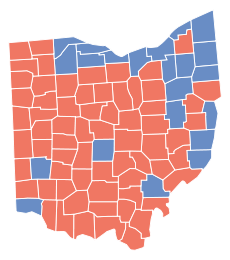
What does this mean?
The yellow counties are an imperfect representation of what famously cost John Kerry the state: the exurban reaches of Ohio, especially in Columbus and Cincinnati. Most of them are well-off and home to middle-class folk, like exurbs in general. White flight played an important role in their formation (although it was not, as some maintain, the biggest motivator). Both McCain and Bush got their largest margins from these places; they constitute an important – perhaps the most important – block of the GOP coalition today.
This has not always been the case. Before 2000, Hamilton County (Cincinnati) tended to give Republican candidates their biggest margins in the state. Today, it has been replaced by the surrounding counties, rapidly growing exurban communities. Nevertheless, Hamilton County remains a reliable Republican stronghold.
Contrary to popular perception, the city Cincinnati itself is not that conservative (not anymore); its deep red suburbs account for the county’s Republican lean. Cities in general never vote Republican, but in GOP strongholds – like Cincinnati – the overwhelmingly red suburban vote outweighs their Democratic lean.
For a visual illustration of Cincinnati’s importance, here is how George Bush did in Ohio:
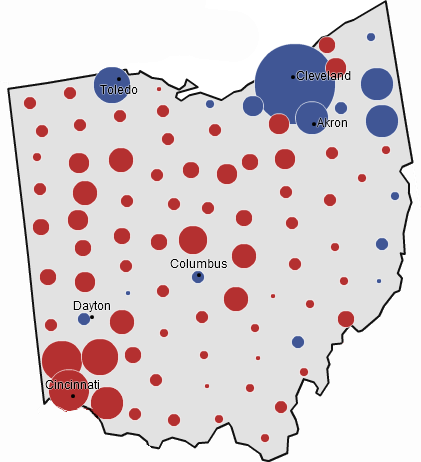
Cincinnati and its surrounding exurbs provide the largest Republican margins. The exurbs of Columbus are going heavily Republican; so is much of eastern Ohio.
Note, however, that George Bush only won the state by 3.5%. Unfortunately the Times does not have maps of stronger Republican victories (e.g. 1988, 1980).
How has the Republican base changed since 2000? The following map provides a sense of how things stand today.
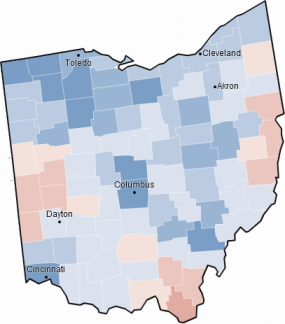
There is not too much to show. One can see a coherent north-south divide; northern Ohio has become more Democratic, southern Ohio less so. Most of the rural southwest is fairly lukewarm to Obama – but so is the blue east. Interestingly, the exurbs seem to have moved Democratic more than their rural brethren. Note that most counties are blue because the country as a whole voted more Democratic in 2008.
It is difficult to tell how much of this is permanent and how much was specific to 2008. Perhaps the exurban counties were only bluer because of the housing crisis. Certainly a place like Cincinnati (with its large black population) voted for Obama as a person, not the Democratic party. Then again, maybe not; the county supported Bush ’04 by only 5%.
But as a whole, red Ohio seems to vote the same way it has for the past few years (or generations). Neither it nor the Ohio Republican Party has changed much in recent years. The same cannot be said for the Democrats.
